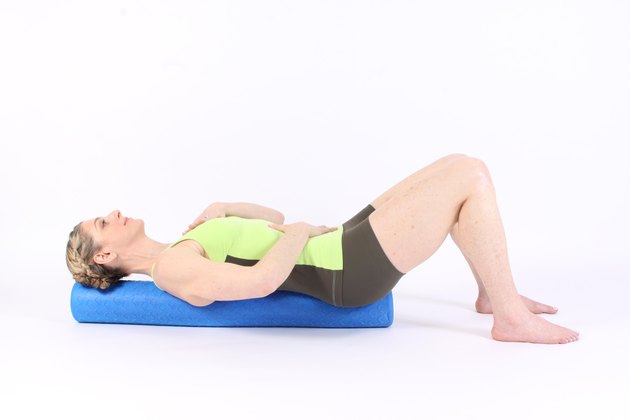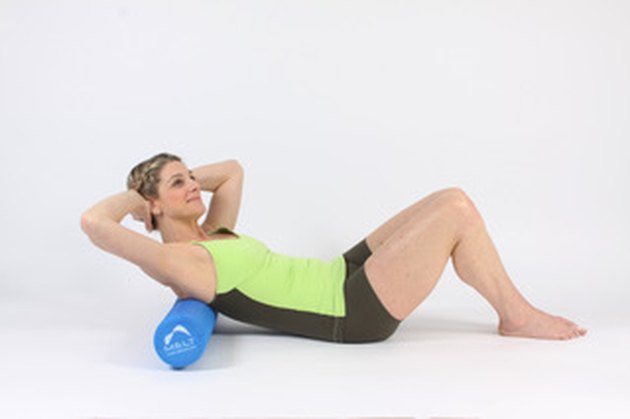When you're in pain, you may not always feel like going to (or being able to) go to the doctor, physical therapist, or chiropractor for help.
This method promises natural pain relief at home, without using medications. Sue Hitzmann, a fitness professional and body worker, created the MELT Method, an acronym for Myofascial Energy Length Technique, to allow people to become their own body workers and eliminate their own pain.

But can this technique really make annoying pain go away? And who should try it? This is what you should know.
What is the MELT method?
We are dealing with a technique that combines conscious meditation, breathing work and restorative auto-myofascial release techniques to help boost natural healing mechanisms.
You are probably familiar with meditation and breathing exercises, but "auto-myofascial release techniques" could be a new term, so we explained it to you.
Myofascial release
Myofascial release (or MFR) is a type of gentle, practical therapy that involves stretching and massage (among other things) to treat the body's myofascial system, which includes the muscles and surrounding connective tissue, called fascia.
The goal is to relieve pressure on the fascia , the idea is that less pressure can help correct misalignment in the body caused by stress, injury, illness, or poor posture.
To function properly and keep it pain-free, the fascia must be lubricated with hyaluronic acid , a substance that our bodies naturally produce. Hyaluronic acid allows the fascia to glide smoothly over the muscles and tendons, according to a June 2013 review in Current Pain and Headache Reports.
One theory put forward in that report is that when hyaluronic acid becomes sticky, instead of lubricating, it can cause stretching in the fascia that could lead to pain. Massage and other practical therapies are believed to help lubricate hyaluronic acid (and thus the fascia), according to the findings in Current Pain and Headache Reports.
This, in turn, is the basis of MFR, although more research is needed to really understand how manipulation can affect the fascia.
Auto-myofascial release
As the name implies, it is a myofascial release that you can do yourself.
In recent years, fitness professionals began teaching patients how to use therapy on their own to control their pain, primarily through the foam roller, according to an April 2017 report in the Journal of Bodywork and Movement Therapies. .
How does this method work?
The MELT Method combines auto-myofascial release, breathing and meditation using what is called a "4R protocol". The four Rs mean:
- Reconnection
- Rebalancing
- Rehydrate
- Launching
Reconnection techniques consist of being more in tune with your body and determining which areas need your attention.
The position you should take is called a "rest assessment," where you lie on the floor with your arms and legs relaxed, palms up. The MELT Method prescribes closing your eyes and using "body sense" to determine if you feel any or all of these common imbalances:
- Is the entire weight of the upper back on the shoulder blades?
- Is the entire middle back arched from the floor?
- Does it have more weight on the coccyx than on the buttocks?
- Are the backs of the thighs on the floor on one or both sides?
If you notice any of these problems, you have identified stress in the body that can cause pain.
Rebalancing techniques focus on the diaphragm and central reflexes to help you restore your " autopilot " – the Hitzmann term for the combination of the autonomic nervous system and the connective tissue system that keeps the body functioning efficiently without conscious control.
The next exercise is the " 3D Breathing Breakdown " where you contract the diaphragm and focus on conscious breathing to reduce the stress response. This is one of Hitzmann's favorite treatments for back pain.

Rehydration techniques aim to "revitalize and rehydrate" connective tissue and relieve tension in our bodies through gentle compression and lengthening techniques.
The image below shows the "upper body rehydration / upper body compression" technique, which uses the upper body to create gentle compression on the shoulder blades, potentially relieving shoulder pain .

Launch techniques focus on facilitating ointment compression and improving range of motion and posture.
Researchers affiliated with the MELT method published a very small study of 22 people in June 2016 in the Journal of Bodywork and Movement Therapies. They found that the method reduced pain, increased flexibility, and provided a real change in connective tissue (although they did not compare the method to other pain relief practices).
Another study from November 2015 in the International Journal of Sports Physical Therapy, for example, showed that self-myofascial release with foam roller and roller massage increased the range of motion and muscle recovery of people after exercise. However, the study authors concluded that more research is needed to understand how much we should do and how often.
However, this is still considered an alternative treatment. Professionals are generally in favor of people moving and taking care of their musculoskeletal system. The body requires movement for proper function. The MELT Method seems to be a good systematic way to get people moving.

So should you try it?
Although there is minimal research examining the various benefits of MELT, the protocol is smooth and generally safe to try. Hitzmann says almost everyone, from children to seniors, can use it.
Still, as with any new exercise routine, but especially one that aims to reduce pain, it's always smart to check with your doctor or physical therapist first.
How to start using MELT at home?
The technique requires some equipment, including massage balls and foam roller. Their website offers beginner packages to buy, or you can use items you already have at home: rolled beach towels can double as foam rollers, and tennis balls can double as massage balls.
Once you have assembled your kit, you are ready to test it. Follow the introductory video that we have posted above. The most recommended is to do it for 10 minutes, about three times a week. That's the bare minimum you need to get your nervous system back on track and help keep you going.
